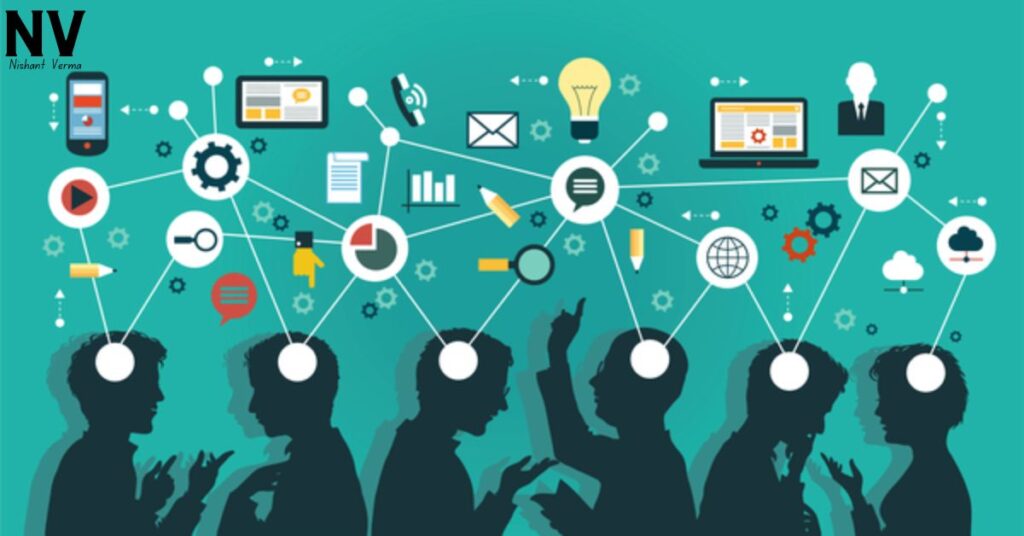In the vast world of marketing, where messages are abundant and diverse, Personalization stands out as a magical touch. It’s not just about selling a product; it’s about creating a unique and tailored experience for each customer. This article explores the enchanting realm of Personalization in marketing, unraveling its importance, strategies, and the impact it has on both businesses and consumers.

Chapter 1: The Essence of Personalization in marketing
1.1 Defining Personalization
Personalization in marketing is like a customized playlist for your favorite tunes. It involves tailoring marketing strategies, content, and product recommendations based on individual preferences, behaviors, and characteristics.
1.2 The Shift from Mass Marketing to Personalization
Gone are the days of one-size-fits-all marketing. The shift towards Personalization reflects a deeper understanding of customers as unique individuals with distinct needs and desires.
Chapter 2: Why Personalization Matters
2.1 Building Emotional Connections
Personalization in marketing goes beyond transactions; it building emotional connections. When customers feel understood and catered to, it creates a sense of loyalty and attachment to the brand.
2.2 Enhancing Customer Experience
A personalized experience is a delightful one. From tailored product recommendations to personalized emails, every touchpoint enhances the overall customer experience, making it memorable and enjoyable.
2.3 Boosting Engagement and Conversion
Customers are more likely to engage with personalized content and offers. The relevance of personalized engagement and communication increases the chances of converting a prospect into a loyal customer.
Chapter 3: Strategies for Effective Personalization
3.1 Data Collection and Segmentation
The backbone of Personalization in marketing is data. Collecting and analyzing customer data allows businesses to segment their audience based on demographics, behaviors, and preferences.
3.2 Personalized Content Creation
Crafting content that resonates with specific segments of your audience adds a personal touch. Whether it’s blog articles, emails, or social media posts, customization makes the content more relatable.
3.3 Dynamic Website Personalization
Tailoring the online journey for each visitor is key. Dynamic website personalization involves showing different content, offers, or product recommendations based on individual user behavior.
3.4 Personalized Email Campaigns
Emails become more than just messages in the inbox when they are personalized. From addressing the recipient by name to recommending products based on past purchases, personalized email campaigns create a sense of individualized attention.

Chapter 4: Technology’s Role in Personalization
4.1 Artificial Intelligence and Machine Learning
Enter the wizards of Personalization in marketing—AI and machine learning. These technologies analyze vast amounts of data to predict customer preferences, automate personalization efforts, and continually improve recommendations.
4.2 Customer Relationship Management (CRM) Systems
CRM systems are like magical books that hold the history and preferences of each customer. They centralize customer data, making it easier to personalize interactions and track the customer journey.
4.3 Personalization Tools and Platforms
An arsenal of personalization tools and platforms helps businesses implement and scale their Personalization in marketing efforts. These tools range from recommendation engines to website personalization platforms.
Chapter 5: Personalization in E-commerce
5.1 Tailored Product Recommendations
E-commerce thrives on personalized product recommendations. Recommender systems analyze past purchases and browsing behavior to suggest products that align with individual tastes.
5.2 Personalized Shopping Experience
From personalized landing pages to individualized discounts, e-commerce platforms use Personalization to create a unique shopping experience for each customer.
5.3 Abandoned Cart Recovery
Ever left items in your online shopping cart and received a gentle reminder? That’s Personalization in marketing in action. Businesses leverage data to send targeted messages, encouraging customers to complete their purchases.

Chapter 6: Overcoming Challenges in Personalization
6.1 Balancing Personalization and Privacy
The enchantment of Personalization comes with a responsibility to protect customer privacy. Striking the right balance ensures a personalized experience without compromising sensitive information.
6.2 Ensuring Data Accuracy
The magic spell can break if the data is inaccurate. Businesses need robust processes to ensure that the data collected is reliable, up-to-date and reflects the actual preferences of customers.
6.3 Managing Customer Expectations
Sometimes, Personalization in marketing can set high expectations. Managing these expectations and ensuring that personalized experiences align with what the business can deliver is crucial.
Chapter 7: Real-Life Examples of Personalization Success
7.1 Amazon: The Personalization Pioneer
Exploring how Amazon, the e-commerce giant, has mastered the art of Personalization through algorithms that recommend products based on browsing and purchase history.
7.2 Netflix: A Personalized Streaming Experience
Delving into how Netflix uses sophisticated algorithms to personalize content recommendations, making the streaming experience unique for each subscriber.
7.3 Spotify: Your Personalized Playlist
Examining how Spotify curates personalized playlists, introducing users to new music based on their listening habits and preferences.
Chapter 8: Future Trends in Personalization
8.1 Hyper-Personalization
The future holds the promise of hyper-personalization, where every touchpoint is finely tuned to an individual’s preferences, creating an even more immersive and tailored experience.
8.2 Voice-Activated Personalization
As voice-activated devices become more prevalent, the future of Personalization involves tailoring experiences based on voice commands and preferences expressed through these devices.
8.3 Augmented Reality (AR) in Personalization
AR is set to transform Personalization in marketing by allowing customers to visualize products in their own space before purchase, creating a highly personalized and interactive shopping experience.
Chapter 9: Conclusion
In conclusion, Personalization in marketing is the magic wand that transforms ordinary interactions into extraordinary experiences. As technology continues to evolve and businesses strive to connect with customers on a deeper level, Personalization in marketing emerges as the secret ingredient for success. By understanding individual preferences, adapting strategies, and leveraging technology wisely, businesses can embark on a journey of enchantment, creating a marketing landscape where every customer feels like the protagonist in their own personalized story. The future is bright, and the magic of Personalization is set to continue captivating both businesses and consumers alike.




